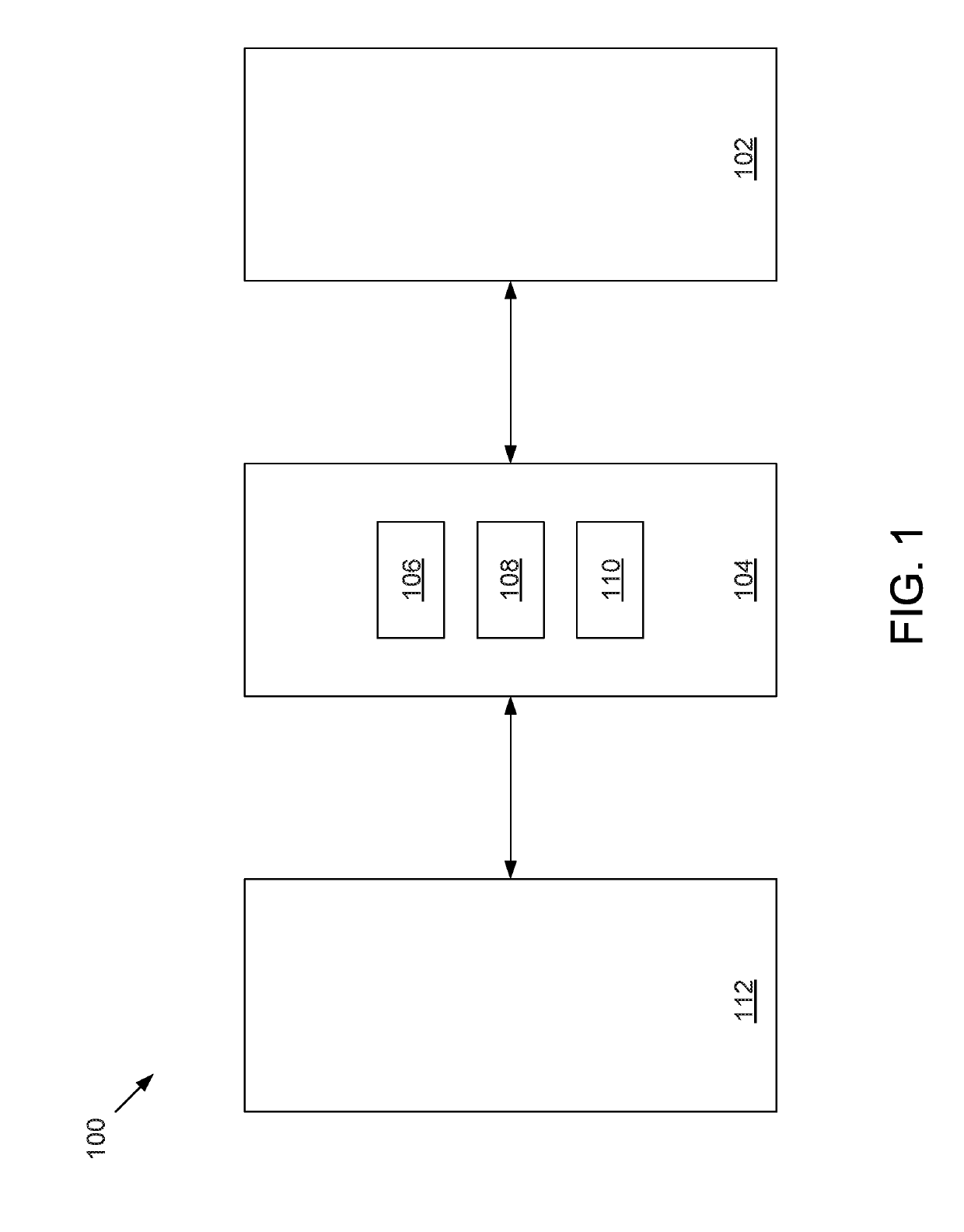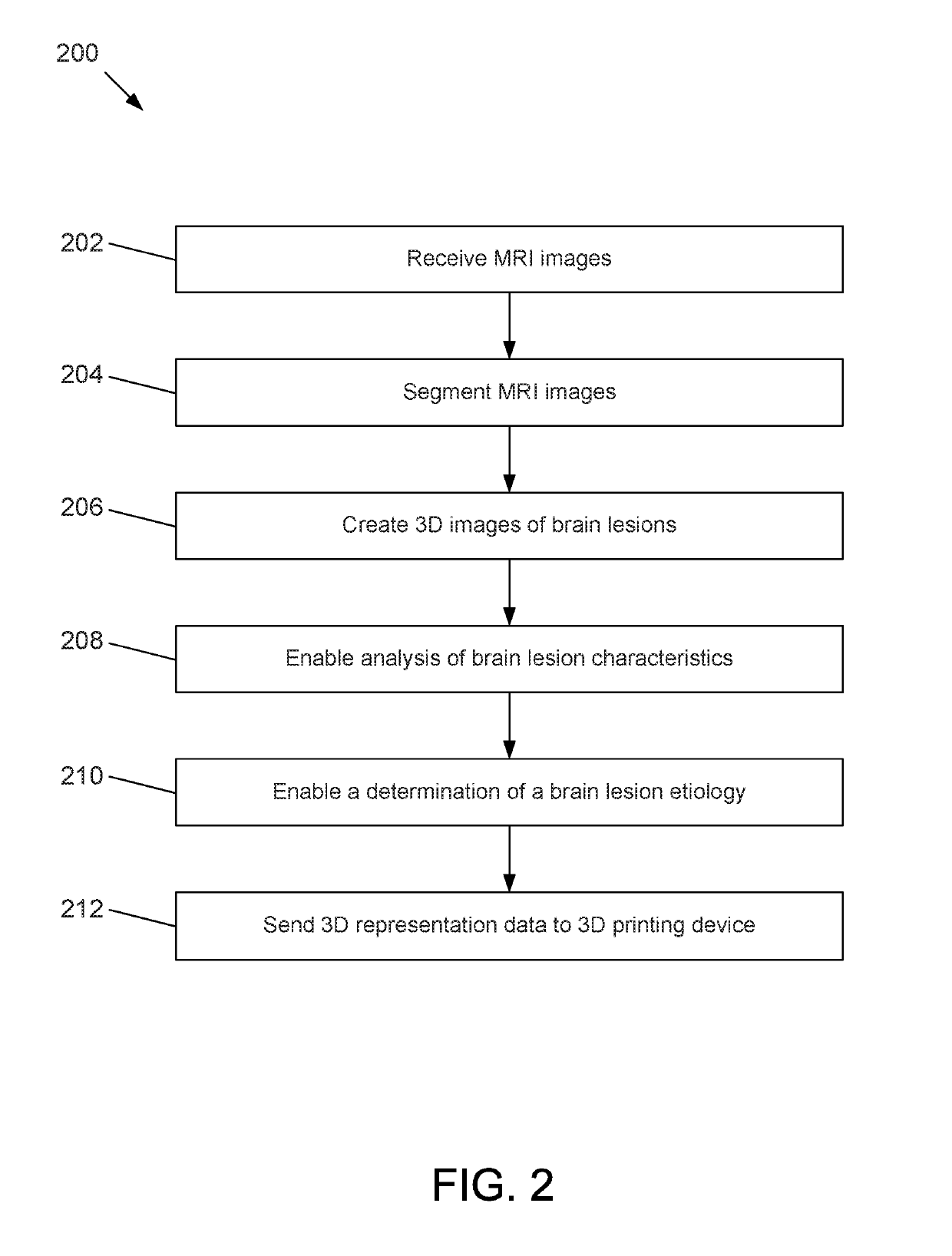Methods, apparatuses, and systems for creating 3-dimensional representations exhibiting geometric and surface characteristics of brain lesions
a technology of geometric and surface characteristics and brain lesions, applied in the field of brain lesions geometric and surface characteristics, can solve the problems of heterogeneity of lesions, difficult to accurately assess the size, volume, and surface area of lesion, and the inability to effectively apply the existing dissemination criteria. , to achieve the effect of redefining the shape and surface features, accurate assessment of lesion size, volume and surface area
- Summary
- Abstract
- Description
- Claims
- Application Information
AI Technical Summary
Benefits of technology
Problems solved by technology
Method used
Image
Examples
Embodiment Construction
[0024]At present, the appreciation of structural anomalies originating from in situ demyelination or non-specific changes within white matter due to aging, migraine headaches, or small vessel disease is limited by traditional 2-dimensional, forced perspective views of T2-hyperintensities within brain tissue acquired from MM studies deficient in full coverage of the brain. In addition, the associated surface characteristics of lesions originating from MS or other etiologies are currently unknown. Therefore, 3D data from observed T2-hyperintensities may provide better lesion characterization, allowing for better differentiation of anomalies arising from MS compared to other etiologies. This approach may also allow for better characterization of non-specific white matter lesions. This may reduce the over-diagnosis of MS by healthcare professionals, thereby preventing the over utilization of disease modifying therapies and their associated morbidities and high costs.
[0025]The embodiment...
PUM
 Login to View More
Login to View More Abstract
Description
Claims
Application Information
 Login to View More
Login to View More - R&D
- Intellectual Property
- Life Sciences
- Materials
- Tech Scout
- Unparalleled Data Quality
- Higher Quality Content
- 60% Fewer Hallucinations
Browse by: Latest US Patents, China's latest patents, Technical Efficacy Thesaurus, Application Domain, Technology Topic, Popular Technical Reports.
© 2025 PatSnap. All rights reserved.Legal|Privacy policy|Modern Slavery Act Transparency Statement|Sitemap|About US| Contact US: help@patsnap.com



